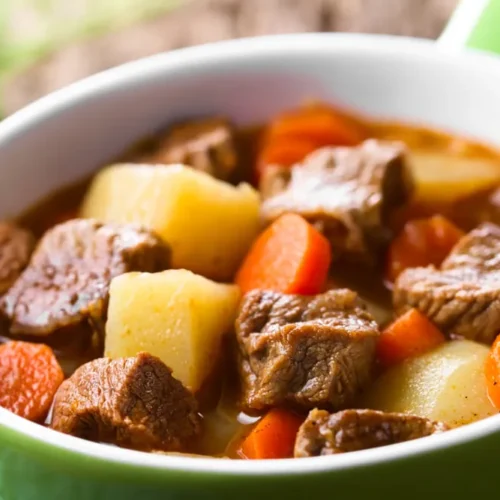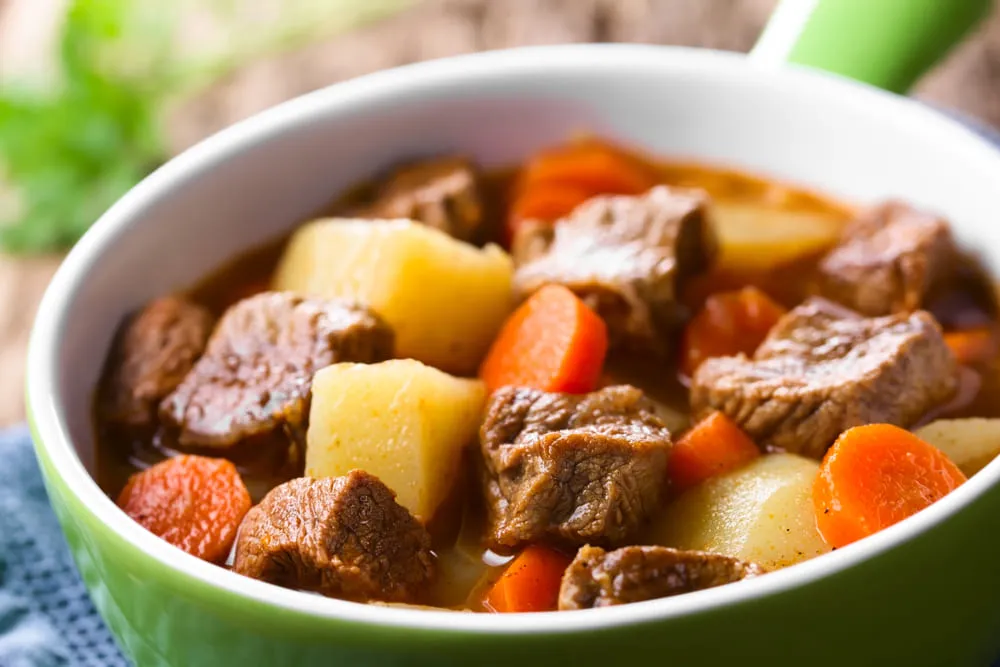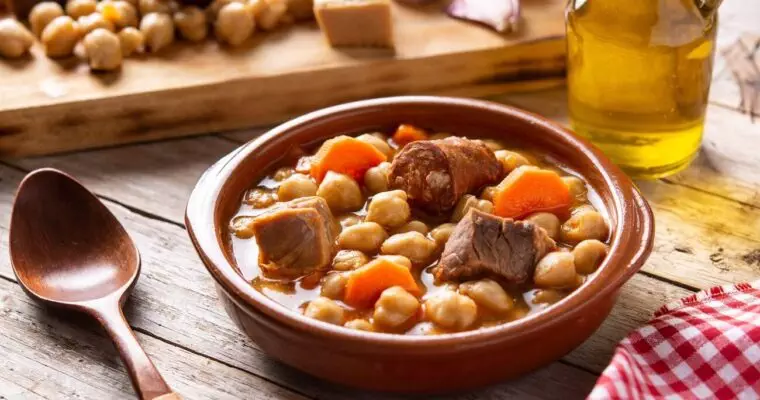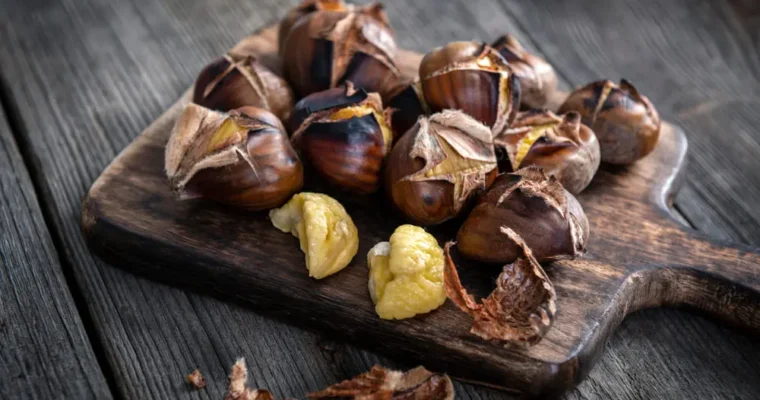Kicking off the fall season with a hearty beef stew is the perfect way to ward off the first chills of the season. This traditional cooking method, especially beloved in mountainous regions, is a classic choice for any kitchen that values the art of slow-cooked meals. While the preparation may be timeless, the Spanish beef stew (or “estofado de carne”) remains a standout option for anyone looking to savor the deep, rich flavors of well-prepared beef.
Table of Contents
History and Origins of Spanish Beef Stew
The tradition of beef stew has deep roots in the Mediterranean basin, dating back to ancient civilizations. Among the early practitioners were the Egyptians, who highly regarded cattle for their ritual significance and as a food source. The Pharaohs, along with the royal family and religious institutions, kept vast herds across Egypt, a testament to the importance of beef in their diet. Throughout history, beef remained a luxury, accessible only to the privileged few, a sentiment that carried on into the classical civilizations and beyond. Today, this once-exclusive delicacy is available to all, yet its preparation still carries the weight of tradition and history.
Key Ingredients for the Perfect Beef Stew
The selection of ingredients is crucial to achieve the authentic taste of a Spanish beef stew. The star of the dish, of course, is the beef—typically, a tough cut that benefits from long, slow cooking, such as chuck or brisket. Alongside the beef, traditional ingredients include onions, garlic, carrots, and potatoes. Spanish paprika, or “pimentón,” adds a distinctive smoky flavor, while a splash of red wine deepens the stew’s richness. Bay leaves, thyme, and rosemary are the herbs of choice, contributing to the stew’s aromatic profile.
Step-by-Step: How to Prepare Spanish Beef Stew
- Preparation: Begin by seasoning the beef with salt and pepper. Heat olive oil in a large pot and brown the beef on all sides. Remove and set aside.
- Sauté the Vegetables: In the same pot, add diced onions and garlic, cooking until softened. Add carrots and potatoes, stirring for a few minutes.
- Building the Stew: Return the beef to the pot, then add the Spanish paprika, bay leaves, thyme, and rosemary. Pour in red wine and beef broth, making sure the meat is mostly submerged.
- Slow Cooking: Bring the stew to a boil, then reduce the heat to low. Cover the pot and let it simmer for at least 2 hours until the beef is tender and the flavors have melded.
- Final Touches: Adjust seasoning to taste. Serve the stew hot, perhaps with a side of crusty bread to soak up the rich sauce.
Secrets to Elevate Your Beef Stew
- Use a Slow Cooker: For an even deeper flavor, consider preparing the stew in a slow cooker. This method allows the ingredients to meld over several hours, resulting in a dish with unparalleled depth.
- Brown the Meat: Don’t skip this step. Browning the beef before adding it to the stew enhances the flavor, creating a more robust and satisfying dish.
- Add Wine Early: Adding the red wine early in the process allows the alcohol to cook off while the rich flavors remain, enriching the overall taste.
- Choose the Right Cut: Opt for cuts like chuck or brisket that benefit from slow cooking, breaking down into tender, flavorful pieces.
- Layer the Herbs: Use a combination of fresh and dried herbs to layer the flavors throughout the stew, ensuring every bite is aromatic and delicious.
- Let It Rest: If possible, make the stew a day in advance. Allowing it to rest overnight enhances the flavors, making it even more delicious when reheated.
- Customize Your Stew: Feel free to add personal touches—such as a hint of spice or a splash of vinegar—to suit your taste.
The Benefits of Welcoming Fall with Spanish Beef Stew
There’s something inherently comforting about preparing a hearty beef stew as the weather turns cooler. It’s a dish that not only warms the body but also connects us with culinary traditions passed down through generations. By starting the season with a classic like Spanish beef stew, you’re not just making a meal—you’re participating in a ritual that has brought comfort and nourishment to countless people before you.
Related Recipes You’ll Love
- Red Wine Braised Beef Stew: A luxurious twist on the classic, with the deep flavors of red wine.
- Spanish Chicken and Chorizo Stew: A flavorful combination of tender chicken and spicy chorizo in a rich tomato-based sauce.
- Madrid-Style Cocido: A traditional Spanish chickpea-based stew, perfect for colder days.
- Oxtail Stew: Rich and flavorful, this dish uses a different cut of beef for a unique taste.
FAQ: Frequently Asked Questions about Spanish Beef Stew
What is the best type of meat for beef stew? The best cuts are those that require long, slow cooking, such as chuck, brisket, or shank. These cuts become tender and flavorful when simmered.
Can I make this stew in a slow cooker? Yes, the slow cooker is an excellent option for beef stew. It allows the flavors to develop over time, resulting in a rich, tender dish.
How long should I cook the stew? The stew should simmer for at least 2 hours on the stove, or about 6-8 hours in a slow cooker, until the meat is tender.
Can I freeze the stew for later? Absolutely! Beef stew freezes well. Just be sure to cool it completely before transferring it to an airtight container. It can be stored in the freezer for up to 3 months.
Conclusion
Spanish beef stew is more than just a meal—it’s a celebration of tradition, flavor, and the comfort of home-cooked food. By mastering this dish, you’re not only creating a hearty meal but also connecting with a culinary history that spans centuries. Whether you’re a seasoned cook or new to the kitchen, this recipe is a must-try for anyone who appreciates the art of slow-cooked, flavorful food.

7 Secrets for a Delicious Spanish Beef Stew You Must Try
Ingredients
- 2 lbs Stewing beef, cut into 2-inch cubes
- 1 tbsp Olive oil
- 1 Onion, chopped
- 1 Carrot, chopped
- 1 Celery stalk, chopped
- 2 Cloves garlic, minced
- 1 tbsp Flour
- 2 cups Beef broth
- 1 cup Red wine
- 1 tbsp Tomato paste
- 1 Bay leaf
- 1 tsp Dried thyme
- ½ tsp Dried rosemary
- Salt and pepper to taste
- 2 lbs Potatoes, peeled and cubed
- 1 cup Frozen peas
Instructions
- Brown the beef: Heat olive oil in a large Dutch oven over medium-high heat. Season beef with salt and pepper. Brown beef on all sides. Remove beef from pot and set aside.
- Sauté vegetables: In the same pot, add onion, carrot, celery, and garlic. Sauté until softened, about 5 minutes.
- Make a roux: Sprinkle flour over vegetables and stir to coat. Cook for 1 minute, or until the flour is lightly browned.
- Add liquids and seasonings: Gradually whisk in beef broth, red wine, tomato paste, bay leaf, thyme, and rosemary. Bring to a boil, then reduce heat to low.
- Simmer beef: Return beef to the pot. Cover and simmer for 1-2 hours, or until beef is tender.
- Add potatoes and peas: Stir in potatoes and peas. Cover and simmer for another 30 minutes, or until potatoes are tender.
- Season and serve: Season with salt and pepper to taste. Remove bay leaf. Serve hot with crusty bread.








